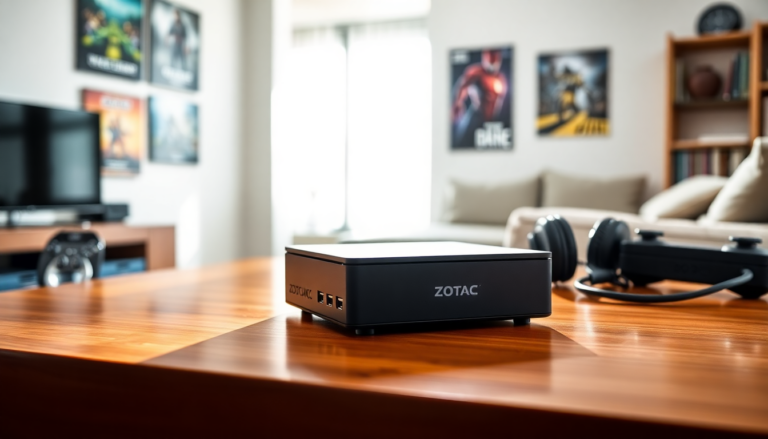Argomenti trattati
Handheld gaming has made significant strides in recent years, capturing the hearts of gamers everywhere. The introduction of devices like the Steam Deck brought the power of PC gaming to a portable format, but not without its challenges. The buzz surrounding the launch of SteamOS on various devices signals a shift, yet Zotac is charting its own course with an exciting update to the Zone handheld gaming PC. This latest model takes a bold step by running a custom Linux operating system, a choice that sets it apart in the crowded market of handheld gaming devices.
What’s new in the Zotac Zone?
The updated Zotac Zone retains the familiar aesthetics of its predecessor but packs a punch with upgraded internals. The design remains sleek with dual touchpads flanking the screen, reminiscent of the Steam Deck’s layout. However, the real story lies beneath the surface. This new iteration boasts an AMD Ryzen AI 9 370 HX processor, which provides a significant boost in performance compared to earlier models. Coupled with increased RAM and storage capacity, this device aims to deliver an exceptional gaming experience.
Custom Linux: a game changer
One of the standout features of the new Zotac Zone is its operating system. Instead of opting for Valve’s SteamOS, which many competitors have adopted, Zotac collaborated with the developers of Manjaro Linux to create a unique gaming environment. This choice not only enhances the functionality of the device but also offers users a more tailored experience. Despite this shift, gamers can rest assured that the device supports Steam, allowing for easy access to their favorite titles through a straightforward interface right on the desktop.
Market potential and availability
The original Zotac Zone struggled to make an impact upon its release, often flying under the radar. With this new version, however, expectations are higher. Gamers are eager to see if the innovative features and the custom Linux operating system will resonate more with the community. As of now, details regarding its launch date remain vague—rumors suggest it could hit the shelves later this year. However, with the original model fetching prices upwards of $1,000, there’s a question of affordability. The high-performance specs of the 370 HX chip suggest that this new model may not come cheap, but the promise of a superior gaming experience could justify the investment.
The gaming journalist’s perspective
In the realm of tech journalism, opinions vary widely, but the consensus is clear: the gaming industry is at a crossroads. With devices like the Zotac Zone pushing the boundaries of what handhelds can achieve, there’s a palpable excitement in the air. Michael, a seasoned tech journalist, highlights the importance of innovation in this space. His years of experience covering events like CES and Mobile World Congress have given him a unique vantage point on the evolution of gaming technology. He emphasizes that while performance is critical, user experience plays an equally crucial role in determining a device’s success.
Looking ahead
As we anticipate the arrival of the new Zotac Zone, the landscape of handheld gaming continues to evolve. The integration of powerful processors and custom operating systems is reshaping how we think about portable gaming devices. With each new release, the competition intensifies, pushing manufacturers to innovate or risk being left behind. One thing is certain: the future of handheld gaming is bright, and the Zotac Zone is poised to be a significant player in this exciting new era.

